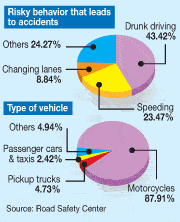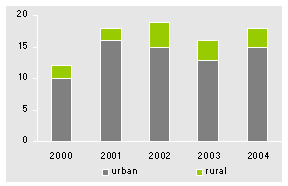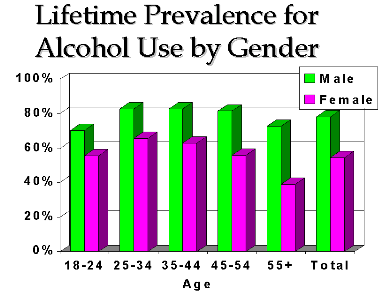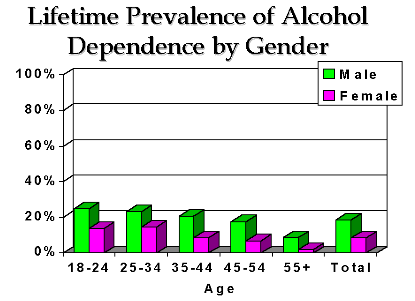Delirium tremors: This results from the long continued action of the poison on the brain. It occurs in chronic alcoholics due to
(1) Temporary excess (2) sudden withdrawal (3) shock after receiving an injury, such as fracture of a bone, or (4) from acute infection, such as pneumonia, influenza, erysipelas etc
It typically begins 72 to 96 hours after the last drink. There’s an acute attack of insanity in which the main symptoms are coarse muscular tremors of the face, tongue and hands, insomnia, restlessness, loss of memory, agitation, confusion, disorientation, uncontrollable fear and has tendency to commit suicide, homicide or violent assault or to cause damage to property. Other symptoms are diarrhea, dilated pupils, fever, tachycardia, tachyapnoea and hypertension. There is disorientation as to time and place and a peculiar kind of delirium of horrors owing to hallucination of the sight and hearing. The patient imagines that insects are crawling under the skin, or snakes are crawling on his bed it is considered unsoundness of mind and not intoxication. Death occurs in about 5 to 5$ of the cases. To control agitation diazepam should be given
Alcoholic Polyneuritis and Korsakoff’s Psychosis: The symptoms of Polyneuritis are weakness; pain in the extremities, wrist and food drop, unsteady gait, loss of deep reflexes and tenderness of muscles of arms and legs
Alcoholic paranoia: In this there are fixed delusions but no hallucinations. The person becomes deeply suspicious of he motives and actions of those he meets and of his family members.
Acute Alcoholic hallucinations: Persistent hallucinations develop within 48 hours after cessation of alcohol intake. The hallucinations may be auditory or visual and their content is usually unpleasant and disturbing. The disorder may last several weeks or months
Alcoholic epilepsy: seizures occur after a say or more of the terminations of as drinking session Sometimes the attack may occur while the patient is actually drinking
Wernicke Encephlopathy: This results from a brain or spinal cord lesion due to heavy drinking, Vitamin B1 deficiency occurs
Symptoms include disturbance of consciousness, drowsiness, amnesia, peripheral neuropathy, external ocular palsies and stupor. It has a high mortality and can cause death in 24 hours. If untreated it can progress to a more chronic condition called Korsakoff psychosis, in which impairment of short term memory with inability to learn new information and confabulation (recitation of imaginary experiences to ill gaps in the memory) are seen
Cardiac dysrhythmias: In alcohol withdrawal tachyrhythmias are common probably because of high adrenergic nervous system activity, which may cause sudden death.
Marchiafava Syndrome: Degeneration of the corpus callosum may occur in alcoholics.
Mallory-Weiss Syndrome: Ruptured esophagus with mediastinitis occurs
Other pathologies include
Malnutrition, Gastric and peptic ulcer, Cirrhosis, Myocarditis pancreatitis and Mental illness



